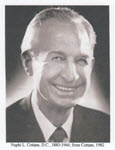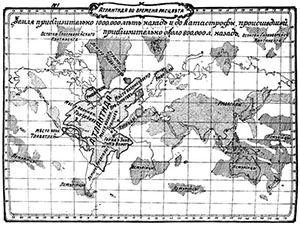When Did Cranial Techniques Begin?
Way before the 20th century! We weren’t the first to think of cranial work or try it. In fact it was used since ancient times…
Ancient and Historical Cranial Techniques
Historically, cranial techniques have been used by people all over the world since the antiquities. There are many examples of this.
Hippocrates described the Macrocephales, who are known for their custom of cranial deformation.
The ancient Egyptians favored an elongated head and pointed chins, as did some Europeans.
Still another example is when Lewis and Clark crossed North America, they described an encounter with the Chinook tribe, a people that molded the cranium of their children to avoid social stigma.
Humans have been molding the cranium for thousands of years, albeit, not necessarily for reasons of health.
Craniopathy & Cranial Osteopathy, Precursors to Neuro Cranial Integration
 In the modern era, cranial molding for salutary purpose – the improvement of health – begins with Nephi Cottam, DC and his life’s work of Craniopathy. William Garner Sutherland’s work with Cranial Osteopathy shortly followed.
In the modern era, cranial molding for salutary purpose – the improvement of health – begins with Nephi Cottam, DC and his life’s work of Craniopathy. William Garner Sutherland’s work with Cranial Osteopathy shortly followed.
It is from these two Giants of the cranial field that provides the beginnings of NCi.
Cottam’s chiropractic influence on NCi is noteworthy for his contributions on the causes of dis-ease in terms of “traumas, thoughts and toxins” within a cranial framework.
Sutherland’s Primary Respiratory Mechanism and Reciprocal Membrane Tension System provides one of the avenues from which NCi achieves the restoration of health.
Pioneers in Developing Neuro Cranial Integration
Alfred Breig, MD, and Allan Terrett, DC researched the biomechanics of the spine and dura mater. Their research details irrefutable changes in the cranium and spine as a result of cranial work with NCi.
Fred Mitchell, Sr. (Muscle Energy Technique), David G. Simmons, MD ( myofascial trigger points) and Nick Spano, DC (muscle palpation) bridges the intimate relationship between the cranium and the spine within the framework of NCi.
Although there are many more names to add to the above list in contributing to the art, science and philosophy of NCi, we want to give credit to Red Adams. His pioneering work on athletes provides in no small part to the unique hands-on approach of NCi.
How Neuro Cranial Integration Works
The brain carries healing information down the nerve pathways to the organs. If there is a “fixation” or “stuck” area in the cranium, it creates a situation that can be termed a “healing information gridlock.” This halts or interferes with the pumping action of the cranium, preventing healing signals from reaching the nervous system and organs. Invariably, poor health follows.
Over the years, a variety of cranial techniques have been developed, such as cranial sacral, cranial release and many others. But none reach the dura mater that is directly responsible for brain and nervous system balance and health.
Neuro Cranial Integration, however, is able to release the “fixation” or “stuck” area in the cranium and take tension off the brain hemispheres, the spine and the entire nervous system in a way that is simply not possible through spinal manipulation or soft tissue techniques.

